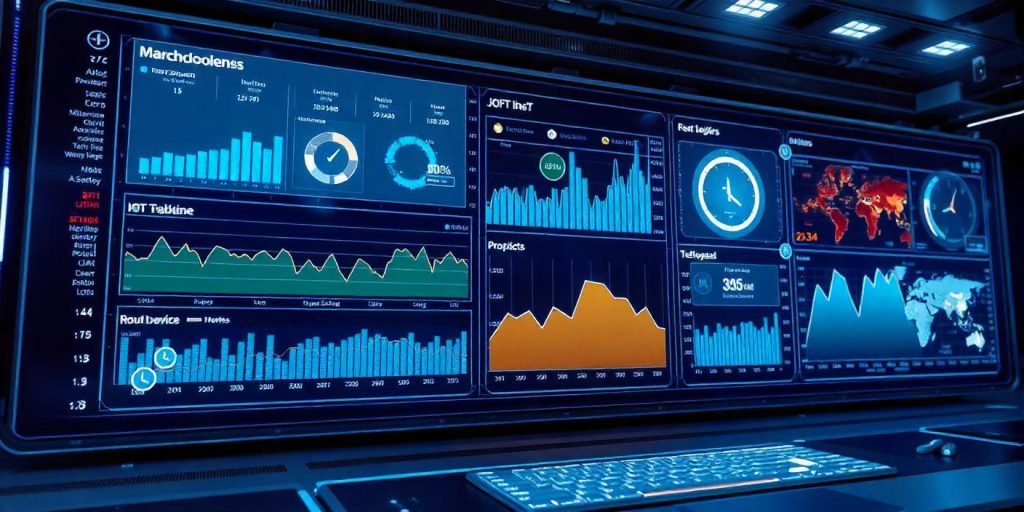In the ever-expanding world of the Internet of Things (IoT), managing connected devices effectively is crucial. Whether it’s a smart home setup or a large-scale industrial network, IoT device management ensures seamless operations, improved security, and optimized performance.
This article dives into what makes IoT device management essential and explores its core components, challenges, tools, and applications across various industries.
Key Components of IoT Device Management
IoT device management is more than just connecting devices. It involves maintaining their functionality, security, and adaptability over time. Let’s break it down:
| Component | Description | Example |
|---|---|---|
| Provisioning | Setting up devices with secure credentials and network access during deployment. | Configuring a smart thermostat in a home automation system. |
| Configuration | Customizing device settings to match operational requirements. | Setting specific temperature ranges for HVAC systems in offices. |
| Monitoring | Real-time tracking of device performance and status. | Detecting faults in machinery sensors in manufacturing units. |
| Firmware Updates | Ensuring devices stay updated with the latest software to enhance performance and security. | Updating medical devices in hospitals for better data accuracy. |
| Access Control | Managing permissions to prevent unauthorized use. | Restricting administrative control of smart door locks to authorized users. |
| Decommissioning | Safely retiring devices to protect data and allow replacement with new devices. | Removing old sensors from an IoT-enabled irrigation system. |
Why IoT Device Management Matters

Effective IoT device management ensures:
- Operational Efficiency: Smooth device interactions prevent disruptions.
- Security: Robust controls protect sensitive data from cyber threats.
- Scalability: Accommodates growth as more devices join the network.
For instance, a smart factory relying on IoT devices for real-time production monitoring needs efficient management to maintain productivity and prevent downtime.
Challenges in IoT Device Management
While the benefits are immense, managing IoT devices isn’t without its challenges:
| Challenge | Impact | Solution |
|---|---|---|
| Device Diversity | Different manufacturers use varying protocols, complicating integration. | Adopting standardized platforms that support multiple protocols. |
| Scalability Issues | Managing thousands of devices can overwhelm systems. | Utilizing cloud-based platforms with high scalability. |
| Security Threats | IoT devices are vulnerable to cyberattacks. | Implementing encryption, firewalls, and access control measures. |
| Data Overload | IoT devices generate massive amounts of data. | Using edge computing to process data locally and reduce bandwidth usage. |
Innovative Tools for IoT Device Management
Here are some modern tools and practices that simplify IoT device management:
- IoT Platforms
Platforms like AWS IoT Core and Microsoft Azure IoT Hub offer centralized control for monitoring, updating, and managing IoT devices. - Edge Computing
By processing data closer to its source, edge computing reduces latency and ensures faster decision-making. - Cloud Integration
Cloud solutions provide storage, analytics, and remote access for managing devices from anywhere. - AI-Powered Automation
AI systems predict failures, optimize device performance, and reduce manual intervention.
Best Practices for IoT Device Management
To achieve optimal results, adhere to these best practices:
| Best Practice | Benefit |
|---|---|
| Plan for Scalability | Ensures smooth integration of additional devices over time. |
| Implement Strong Security | Protects devices and networks from unauthorized access and cyber threats. |
| Enable Real-Time Monitoring | Identifies and resolves issues before they escalate. |
| Automate Updates | Keeps devices running with the latest firmware, reducing vulnerabilities. |
| Leverage Analytics | Extracts valuable insights from IoT data for informed decision-making. |
Applications Across Industries
IoT device management has transformed numerous industries.
| Industry | Use Case |
|---|---|
| Manufacturing | Monitoring machinery health and optimizing production processes. |
| Healthcare | Tracking patient vitals through wearable devices. |
| Agriculture | Using sensors to monitor soil moisture and weather conditions. |
| Smart Cities | Managing traffic systems, streetlights, and waste collection services. |
How Aknitech Automation Simplifies IoT Management

At Aknitech Automation, we specialize in IoT device management solutions tailored to your industry. Our cutting-edge tools and expertise empower businesses to integrate, monitor, and scale their IoT ecosystems efficiently.
From implementing advanced access control systems to leveraging real-time monitoring, Aknitech Automation ensures your IoT networks are secure, scalable, and future-ready.
Conclusion
IoT device management is the backbone of the connected world, ensuring devices work seamlessly while addressing security, scalability, and performance challenges. As IoT continues to grow, robust management practices will be essential to unlock its full potential.
Partner with Aknitech Automation to transform your IoT network into a well-oiled machine, driving efficiency and innovation in your operations.







